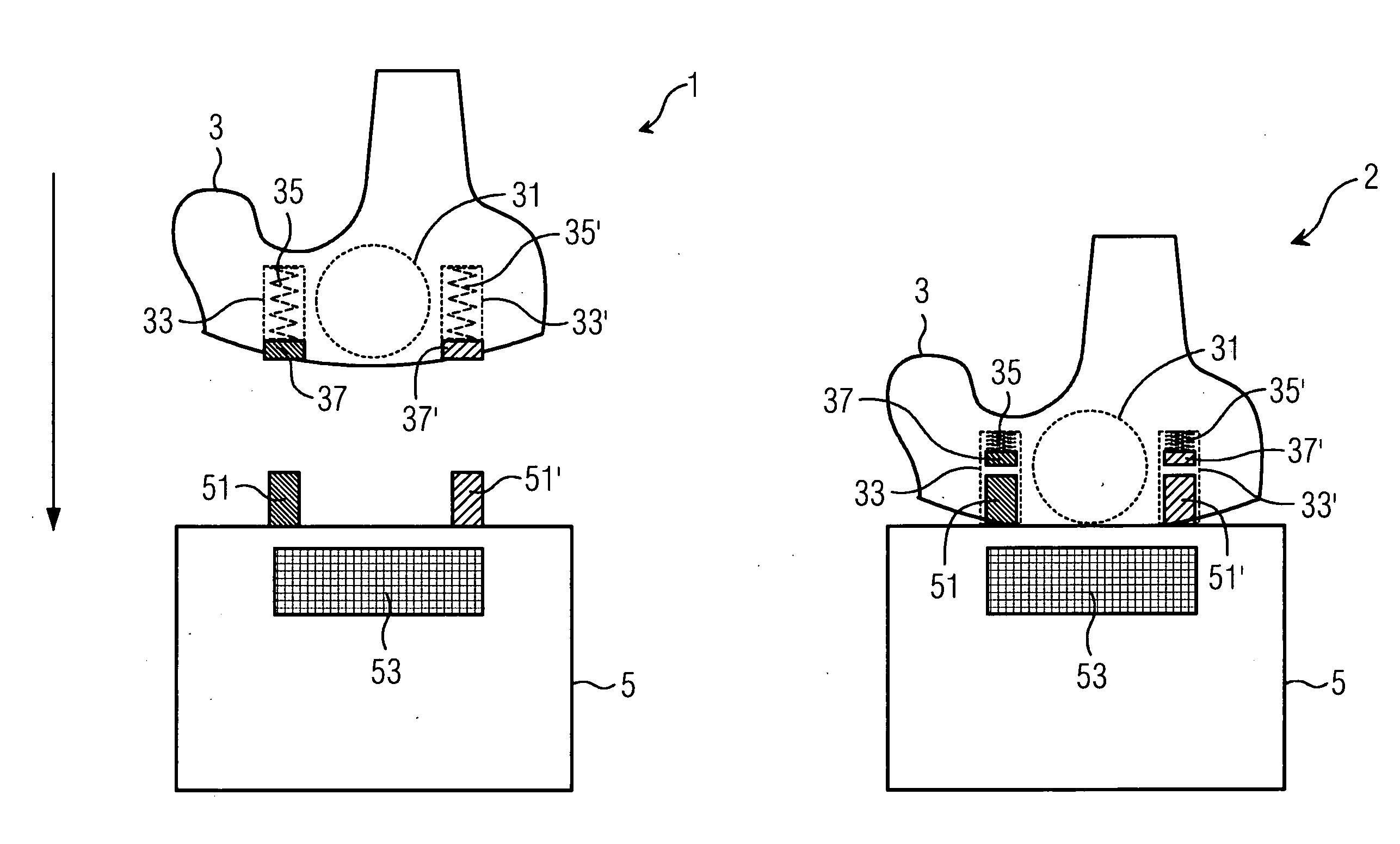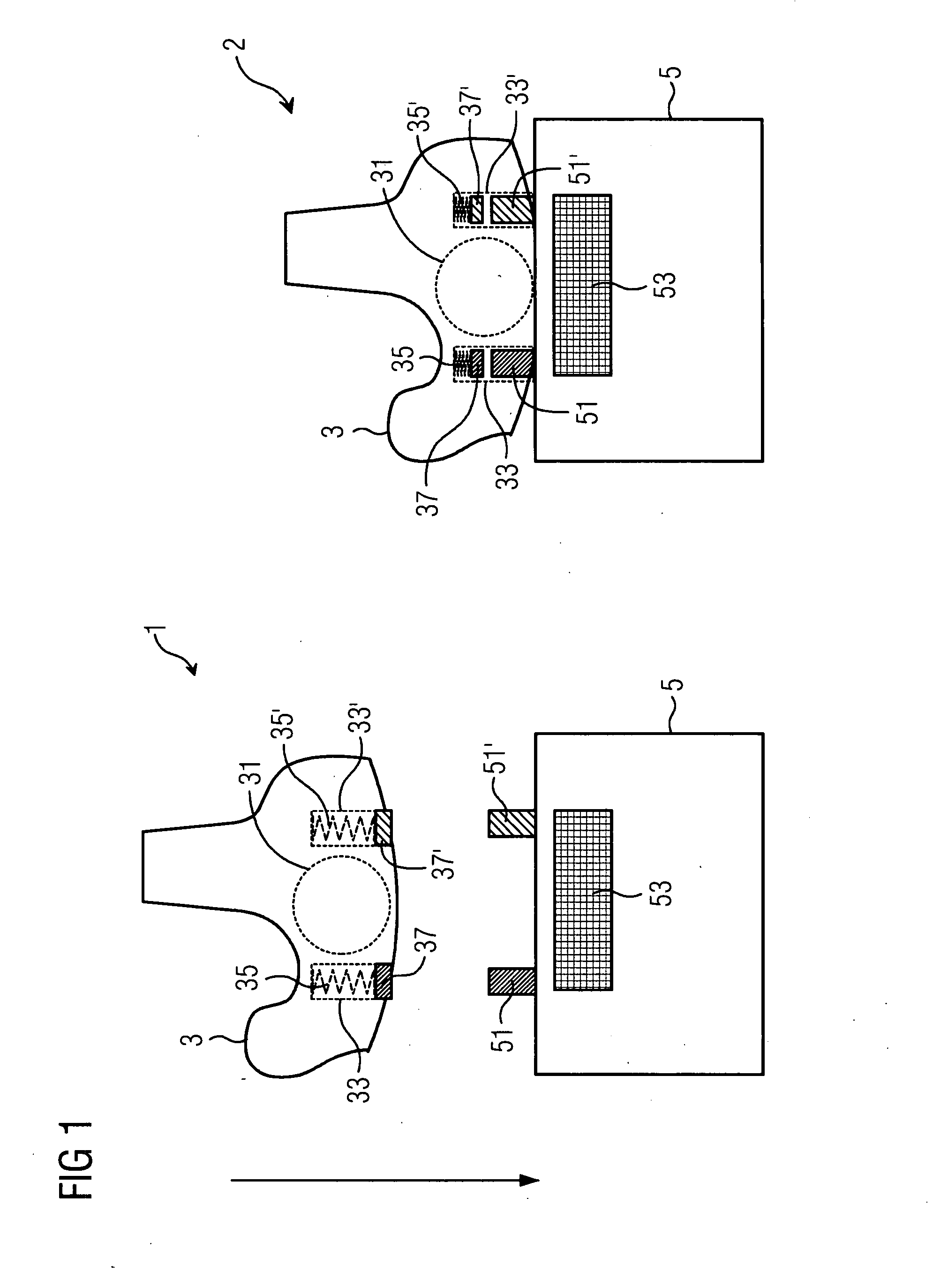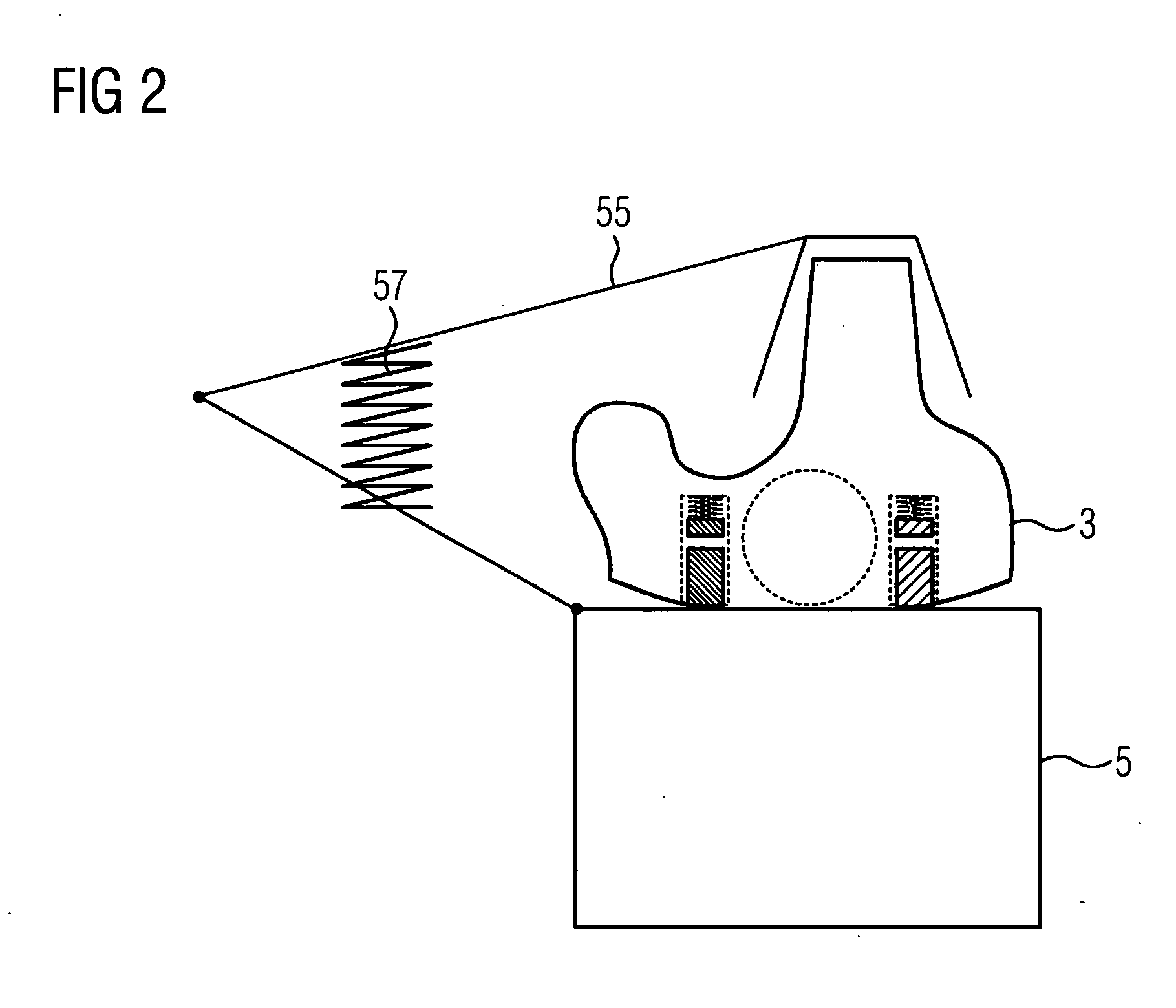Charging device for hearing aid
a charging device and hearing aid technology, applied in electrical appliances, transportation and packaging, electric vehicles, etc., can solve the problems of insufficient space, difficulty in removing the battery from the hearing aid, and difficulty in charging the battery by induction
- Summary
- Abstract
- Description
- Claims
- Application Information
AI Technical Summary
Benefits of technology
Problems solved by technology
Method used
Image
Examples
Embodiment Construction
[0029]FIG. 1 shows a hearing aid 3 and associated charging device 5 in a first position 1 and a second position 2. The hearing aid 3 is an in-the-ear (ITE) hearing aid and it contains a battery 31. Two openings with guides 33 and 33′ are provided in the housing of said hearing aid 3. Reset elements 35 and 35′ in the form of coil springs, on the ends of which are contact elements 37 and 37′, are located in the guides. The contact elements 37, 37′ are moveably fitted in the guides 33, 33′ and in the first position (i.e. in an operating or at-rest state of the hearing aid without interaction with the charging device) are in a position in which the outer surface of the contact elements 37, 37′ is essentially flush with the housing of the hearing aid 3, so that the openings are covered by the contact elements. This advantageously prevents cerumen or dirt entering the hearing aid. The charging device 5 has two charging contacts 51 and 51′ in the form of pins and contains a magnet 53.
[0030...
PUM
 Login to View More
Login to View More Abstract
Description
Claims
Application Information
 Login to View More
Login to View More - R&D
- Intellectual Property
- Life Sciences
- Materials
- Tech Scout
- Unparalleled Data Quality
- Higher Quality Content
- 60% Fewer Hallucinations
Browse by: Latest US Patents, China's latest patents, Technical Efficacy Thesaurus, Application Domain, Technology Topic, Popular Technical Reports.
© 2025 PatSnap. All rights reserved.Legal|Privacy policy|Modern Slavery Act Transparency Statement|Sitemap|About US| Contact US: help@patsnap.com



